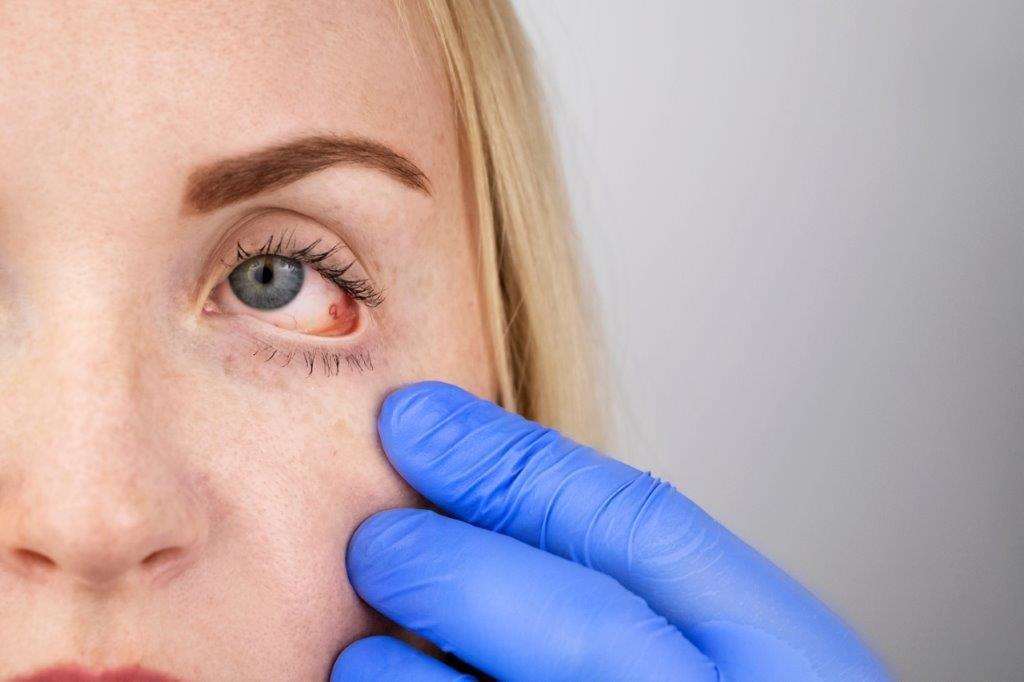Uveitis: A Comprehensive Guide for Patients

Uveitis is when the middle part of your eye gets swollen and sore.
This guide will help you understand the condition, its symptoms, causes, diagnosis, and treatment options.
What is Uveitis?
Uveitis refers to inflammation of the uvea, which includes the iris (colored part of the eye), ciliary body, and choroid[1]. It can affect one or both eyes and occurs in people of all ages, including children[5].
Types of Uveitis
Uveitis is classified based on the affected area of the eye:
1. Anterior uveitis: Affects the front of the eye (iris and ciliary body)
2. Intermediate uveitis: Affects the vitreous (gel-like substance in the eye)
3. Posterior uveitis: Affects the back of the eye (choroid and retina)
4. Panuveitis: Affects all layers of the uvea[1]
Symptoms
Common symptoms of uveitis include:
– Eye pain (usually a dull ache)
– Redness of the eye
– Light sensitivity (photophobia)
– Blurred vision
– Floaters (dark spots in vision)
– Decreased vision[5]
Symptoms may develop suddenly and worsen quickly, particularly in anterior uveitis[5].
Causes
Uveitis can result from various factors:
1. Autoimmune disorders: Such as rheumatoid arthritis, lupus, or ankylosing spondylitis
2. Infections: Including herpes, toxoplasmosis, or tuberculosis
3. Inflammatory diseases: Like sarcoidosis or inflammatory bowel disease
4. Eye injury
5. Certain cancers
In many cases, the exact cause remains unknown, and we call it idiopathic[5].
Diagnosis
If uveitis is suspected, you’ll likely be referred to us or another ophthalmologist. The diagnosis process may include:
1. Eye examination: Using a slit-lamp microscope to check for signs of inflammation
2. Visual acuity test: To assess any vision changes
3. Dilated eye exam: To examine the back of the eye
4. Additional tests: Blood tests, imaging studies, or eye fluid samples may be necessary to determine the underlying cause[5]
Treatment
The primary goals of uveitis treatment are to reduce inflammation, alleviate pain, prevent further tissue damage, and restore vision. Treatment options include:
1. Corticosteroids: Often the first-line treatment, available as eye drops, oral medication, or injections
2. Immunosuppressive agents: Used for chronic or severe cases
3. Biologics: Advanced medications for resistant cases
4. Antibiotics or antivirals: If an infection is the cause[1][2]
Complications
If left untreated, uveitis can lead to serious complications:
– Glaucoma
– Cataracts
– Retinal detachment
– Permanent vision loss[5]
Living with Uveitis
Managing uveitis involves:
1. Adhering to treatment: Take medications as prescribed and attend all follow-up appointments
2. Self-care: Use dark glasses for light sensitivity and apply warm compresses for comfort
3. Regular monitoring: Watch for any changes in symptoms and report them promptly
4. Lifestyle adjustments: Manage stress and maintain a healthy diet[3]
Support and Resources
Living with uveitis can be challenging. Consider joining support groups or online communities to connect with others who understand your experience[4].
Remember, early diagnosis and treatment are crucial in managing uveitis and preventing vision loss. If you experience any symptoms, seek medical attention promptly. With proper care and management, many people with uveitis maintain good vision and quality of life.
Citations:
[1] https://www.abbvie.ca/content/dam/abbvie-dotcom/ca/en/documents/educational-resources/Uveitis-A-guide-to-your-condition-and-its-treatment-EN.pdf
[2] https://www.ouh.nhs.uk/patient-guide/leaflets/files/86265uveitis.pdf
[3] https://myhealth.alberta.ca/Health/aftercareinformation/pages/conditions.aspx?hwid=ut3274
[4] https://uveitis.org/patients/support/
[5] https://patient.info/eye-care/eye-problems/uveitis
[6] https://www.mayoclinic.org/diseases-conditions/uveitis/symptoms-causes/syc-20378734
[7] https://www.nei.nih.gov/learn-about-eye-health/eye-conditions-and-diseases/uveitis
[8] https://uveitis.org/patients/education/patient-guides/
